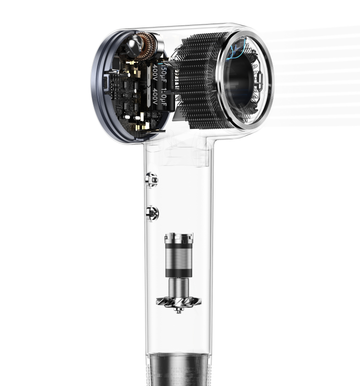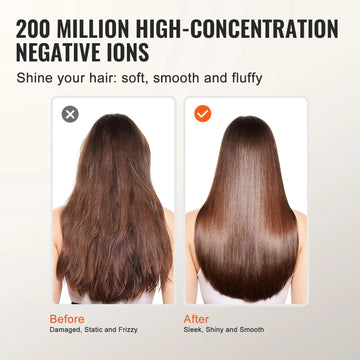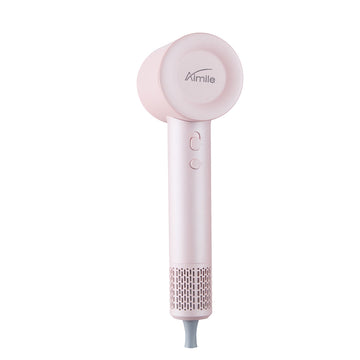Hair Dryer Motor Power and Speed Explained: How RPM and Air Volume Affect Drying Performance
Choosing the right blow dryer can dramatically change your daily routine—cutting drying time, improving hair texture, and even reducing long-term damage. But behind the sleek design and glossy packaging lies the true engine of performance: the motor. Understanding how motor power, RPM (revolutions per minute), and air volume interact helps you make smarter decisions when shopping for your next hair tool.
In this in-depth guide, we’ll break down the science of motor power and speed, explore how airflow shapes performance, and show you how to find the perfect balance between power, noise, and durability.
The Basics of a Hair Dryer Motor
Every blow dryer relies on a motor to convert electrical energy into mechanical energy. The motor drives a fan that pushes air through the heating element, producing the warm airflow that dries your hair.
There are three main motor types found in modern dryers:
1. DC Motors
Common in home-use dryers, DC motors are lightweight and affordable. They usually generate 20,000–25,000 RPM, sufficient for everyday use. However, they may have a shorter lifespan compared to AC or brushless types.
2. AC Motors
Favored in professional salon dryers, AC motors deliver strong air pressure and extended durability. They often produce 18,000–22,000 RPM but move higher air volumes, resulting in faster drying with less heat.
3. Brushless Motors (BLDC)
The newest innovation, brushless motors, offer higher efficiency and longevity. With RPMs exceeding 100,000 in premium models, they provide faster drying while consuming less energy and generating less noise—ideal for a quiet hair dryer.
How Motor Power Impacts Drying Speed
The power of a blow dryer, measured in watts, determines how much energy it uses to heat and move air. More wattage means stronger airflow and faster drying—but not always better results.
- Low power (1000–1400W) – Travel dryers or compact models, slower drying speed.
- Medium power (1600–1800W) – Balanced for home use; efficient and affordable.
- High power (1900–2100W+) – Professional-grade dryers that reduce drying time by up to 30%.
Pro Tip: Pairing a high-wattage motor with a narrow concentrator nozzle increases airflow precision for smoother results.
RPM and Air Volume: The Real Drivers of Performance
What Is RPM?
RPM measures how fast the motor’s fan spins. Higher RPMs create stronger airflow, pushing more air through the heating coil and onto your hair.
However, RPM alone isn’t the full story. The shape of the fan blades, nozzle design, and internal airflow path all contribute to the final air velocity.
Understanding Air Volume (CFM)
Air volume is typically measured in CFM (cubic feet per minute) and represents how much air passes through the dryer. A higher CFM ensures more efficient evaporation of water from hair strands.
| Motor Type | Average RPM | Average CFM | Use Case |
|---|---|---|---|
| DC Motor | 20,000–25,000 | 40–50 | Home use |
| AC Motor | 18,000–22,000 | 60–80 | Salon-level drying |
| Brushless Motor | 80,000–110,000 | 90–100 | High-end, fast drying |
The Science of Airflow and Heat Distribution
Air Pressure vs. Air Volume
A high-pressure dryer concentrates air through smaller vents for powerful styling control. A high-volume dryer, on the other hand, covers more area quickly—ideal for thick or curly hair.
Heat Management
Efficient dryers combine heat sensors and air velocity control to avoid overheating. Advanced technologies like ionic hair dryers neutralize positive ions in wet hair, minimizing frizz and sealing moisture.
Noise Level and Comfort in Hair Dryer Design
Many users prefer a quiet hair dryer for comfort during daily use. Noise primarily depends on motor type and airflow design. Brushless motors significantly reduce noise while maintaining power, making them perfect for early-morning routines or shared spaces.
Design features that reduce noise:
- Aerodynamic fan blades
- Rubber dampeners inside the housing
- Balanced airflow chambers
Durability, Energy Efficiency, and Safety
Long-lasting dryers aren’t just about performance—they’re also safer and more cost-effective. Look for:
- Overheat protection systems
- Replaceable filters for easy maintenance
- Eco-friendly components that reduce power consumption
High-efficiency brushless motors consume up to 30% less energy, making them an eco-conscious choice when you plan to buy hair dryer models that last years.
How to Choose the Right Hair Dryer for You
For Everyday Users
Choose a blow dryer with 1600–1800W power and ionic technology for smoother finishes.
For Professionals or Salons
Opt for AC or brushless motors for durability, speed, and consistent performance under heavy use.
For Frequent Travelers
A compact, dual-voltage model under 1500W saves space and avoids airport voltage issues.
Common Myths About Hair Dryer Power and Speed
-
“Higher wattage means better results.”
Not always—efficiency and airflow design matter more than raw power. -
“Ionic hair dryers damage hair.”
False. Ionic technology actually helps retain moisture by breaking down water molecules faster. -
“All quiet dryers are weak.”
Modern brushless designs disprove this by combining low noise with high RPM performance.
Maintenance Tips for Peak Performance
- Clean the air filter weekly to prevent overheating.
- Avoid wrapping the cord tightly—it damages internal wiring.
- Store in a dry area away from moisture.
- Regularly check attachments and vents for lint buildup.
Proper maintenance extends your dryer’s life and ensures consistent airflow.
Internal and External Resources
Internal Links:
- How Ionic Hair Dryers Improve Hair Health
- Top 10 Quiet Hair Dryers for 2025
- Choosing the Right Wattage for Your Hair Type
External References:

Final Thoughts
The power and speed of a hair dryer motor define how effectively you can dry and style your hair. Understanding the balance between RPM, air volume, and wattage helps you make a purchase that fits your lifestyle and hair type.
Whether you want an ionic hair dryer for smoothness, a quiet hair dryer for peaceful mornings, or simply want to buy hair dryer models that deliver professional results at home—knowing the mechanics behind your tool makes all the difference.



